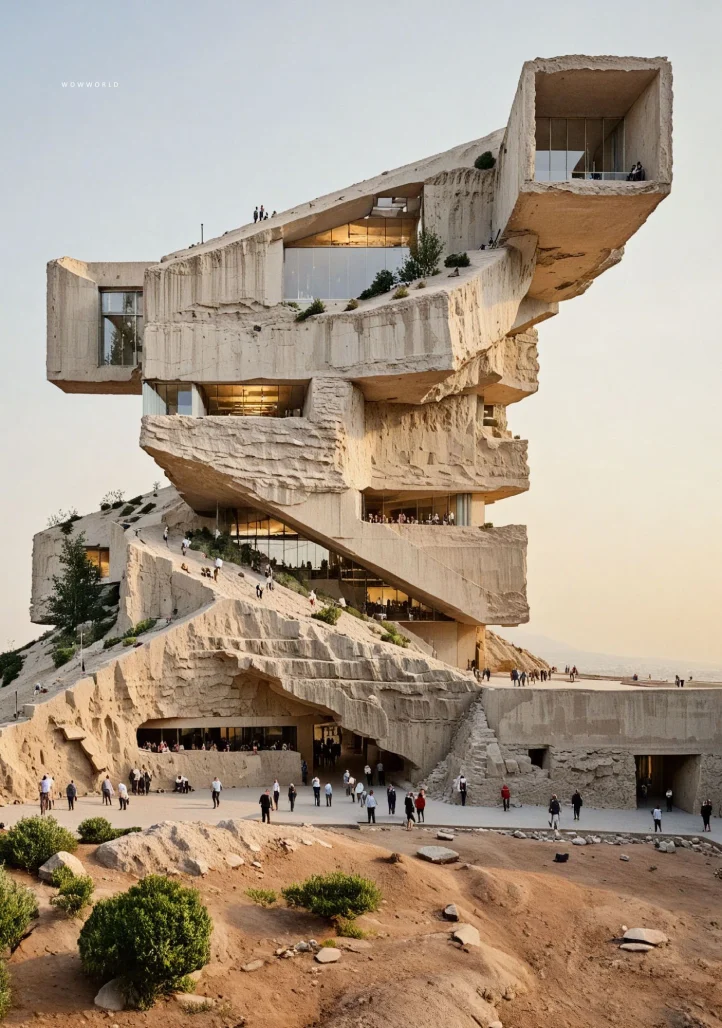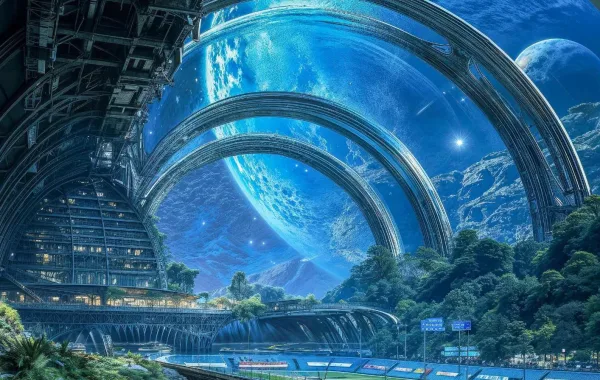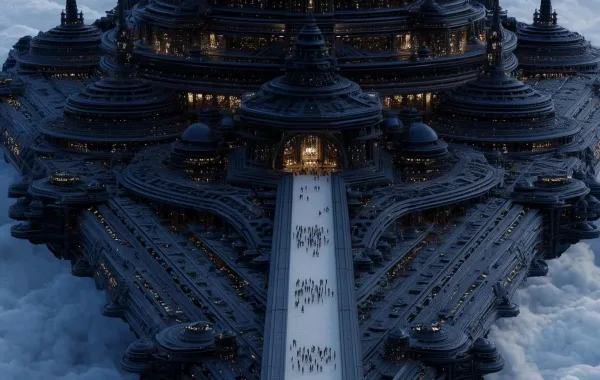Split Origin: Exploring Duality Between Flesh and Code
In a realm where tactile sensation meets digital imagination, Nataya (@neuralounge), based in Beirut, Lebanon, merges architecture, spatial design, and material exploration into digital artistry that is profoundly human. Her creations bridge structure and softness, control and surrender, physicality and code, exploring identity through surreal yet intimate visuals.
Her defining works—“Split Origin,” “The Architecture of Becoming,” and “Symmetry of the Unseen”—carry her dual identity as both designer and painter. Each piece captures the interplay of raw textures and digital elegance, embodying the subtle tension between nature, humanity, and technology.“Each creation evokes a quiet intensity, where beauty, emotion, and human fragility emerge through digitally constructed forms.”

Interview with Nataya
1. What does “Split Origin” mean to you on a personal level?
For me, it’s an emotional blueprint. It’s how I process contradiction—how softness and structure coexist. “Split Origin” is rooted in my own history: being shaped by more than one culture, one discipline, one truth. It’s a meditation on being multiple.
2. Your work bridges both the digital and tactile—how do you approach that balance?
I start with materials in mind—metal, skin, pigment—even if the final piece is digital. That grounding keeps the work visceral. The code is the architecture, but the intuition comes from touch. The screen becomes a surface, like a canvas or fabric.
3. How do biological forms influence your visual language?
Cells, tissues, neural webs—they fascinate me. Not for their science, but their metaphor. They speak to interconnection and vulnerability. I use them to build imagined anatomies, where identity dissolves and reforms in unfamiliar shapes.
4. What emotional states do you try to evoke through your figures?
There’s always tension—between control and surrender, rigidity and melt. I’m interested in the moment just before change, the threshold. My figures aren’t static portraits; they’re emotional echoes—quiet, uneasy, tender.
5. How does your background in painting inform your digital practice?
Color and gesture are still everything. Even in simulation, I paint. I layer, erase, blend. That muscle memory from painting lets me guide the digital with my instincts. It’s not a binary switch—it’s a continuation.
6. Many viewers describe your work as haunting. What role does beauty play in that?
I don’t aim for beauty, but I also don’t avoid it. I think beauty disarms. It draws people into discomfort. My work often seduces before it unsettles. That contradiction is intentional—it mimics the emotional experience of transformation.
7. Do you consider your art political?
Subtly, yes. Not in slogans, but in how it questions categories—of gender, body, selfhood. When you show forms that can’t be named easily, it destabilizes the systems that rely on labels. That’s political, even in silence.
8. What future directions do you see for “Split Origin”?
It’s expanding. I’m working on immersive environments now—letting viewers step inside the dualities. Not just to see the body split, but to feel it. To walk through the paradox. The cell was just the start. Now, I want to build the whole organism.

Cells, Systems, and Memory: Symbols of Subtle Dualities
In “Split Origin,” a luminous figure wrapped in delicate cellular lace symbolizes duality itself—origin and future, self and system, beauty and code. This artwork meditates on paradoxes of existence, viewing the cell not just as biology, but as metaphor for our intertwined destinies, mutation becoming meaning, unity fusing with multiplicity.
“The Architecture of Becoming” intensifies these themes. Here, a figure emerges from spiraling DNA strands, suspended between unraveling and regeneration. This powerful visual asks if identity stems from what we recall or what recalls us, blurring lines between memory and biology, myth and imagination, flesh and fiction. With “Symmetry of the Unseen,” Nataya continues this narrative by depicting identity dissolving into a quiet fusion of memory, mutation, and machine. Flesh becomes a system, and human presence transforms into poetic ambiguity. This piece echoes Nataya’s exploration of what it means to feel authentic in an increasingly simulated reality.contact us
02
Be the Next
Story We Tell.

At WOW WORLD
We spotlight visionaries who use AI to reshape creativity, emotion, and culture. Just like many artists featured in our past issues, they prove that when technology meets imagination, storytelling knows no limits.
👉 Do you have a project that turns emotion into innovation?
👉 Want to join a global conversation redefining the future of design?
📖 Submit your work and be featured in the next WOW WORLD issue.
🎨 Inspire the next generation.
Error: Contact form not found.
latest posts
01
Read More!

InterGalatica Worlds by Frederico Serra

Frequency of Being by Cristina Dinea Papp





